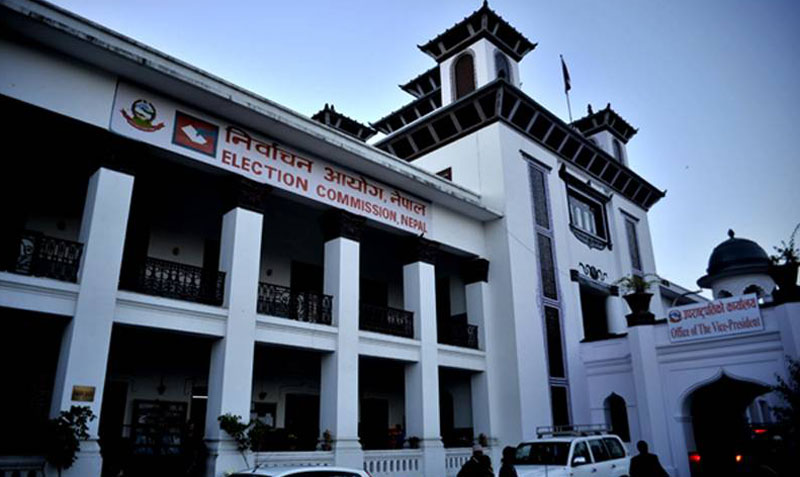
OR
Less violence likely in upcoming polls: Observers
Published On: November 25, 2017 06:56 AM NPT

Political maturity, social media seen as positive factors
KATHMANDU, Nov 24: Compared to all major elections in the past, the upcoming parliamentary and provincial assembly polls are likely to witness fewer instances of electoral violence --thanks to greater maturity among the political parties and more awareness among the people.
Except for a few exceptional incidents in which over a dozen cadres were injured in inter-party clashes and the string of bomb explosions triggered by the Netra Bikram Chanda-led Communist Party of Nepal in different parts of the country, there has not been any major poll-related violence as of Friday. Simultaneous parliamentary and provincial assembly polls are scheduled for November 26 and December 7.
Experts attribute this to a more mature political culture, the strengthening of poll security and the emergence of social media as a new platform to vent ire. “We have observed fewer incidents of political violence in this election as compared to the 2013 and 2008 CA elections. We think this is because of the advances made by political parties in democratic exercise,” said Spokesperson of Nepal Police Manoj Neupane.
Police claim that the authorities have also maintained surveillance in some sensitive areas as a precaution against violence during the polls.
Netra Bikram Chand-led CPN has been ambushing and attacking candidates and political rallies but police report fewer clashes between rival parties. However, clashes between the Nepali Congress (NC) on one hand and CPN-UML and Maoist Center cadres on the other have been reported from Rasuwa, Rukum, Humla, Nuwakot, Okhaldhunga and Sankhuwasabha and some other districts. Two people were killed in political clashes in Dolakha and Kavre during the recent local elections.
Although two weeks remain for the conclusion of both the poll phases, security agencies said their preliminary assessment has shown a lower chance of political clashes this time.
Political analyst Bishnu Sapkota believes that no single factor is behind the decrease in violence during elections. “The waning influence of criminal groups, better security management, the political parties’ policy of refraining from violence and observation by media and social media are key factors,” said Sapkota.
Former chief of Nepal Police, Kuber Singh Rana has also observed a decline in conflict between political parties. “I have noticed that clashes between political party cadres have been declining with each successive election. Political maturity among the parties and better security management are major factors behind this progress,” Rana told Republica.
“Election campaigning has been shifting in focus to fair political debate between the leaders and also publicity through social media, where cadres can’t meet each other in person,” he added.
Former IGP Rana further claimed that road access to remote areas and technological developments help the security agencies in responding quickly to any incident.
District administration authorities have been declaring many places as prohibited areas for political rallies, in view of potential clashes between rival political parties.
Some also believe that a shift to social media for election campaigning has made for fewer physical clashes between the cadres of rival parties. “Social media has worked as ventilation between rival parties and made the political debate more democratic,” he said.
You May Like This

Saptari enforces strict security measures for upcoming polls
RAJBIRAJ, Sept 13: The local authorities are tightening the security in the district in view of the forthcoming 3rd phase... Read More...

RJPN registered for upcoming polls
KATHMANDU, Aug 27: The Rastriya Janata Party-Nepal (RJPN) has been registered with the Election Commission for the upcoming elections of the... Read More...

Polls security in question amid growing violence
KATHMANDU, May 11: Growing number of poll-related violence in the backdrop of the local elections has exposed lapses in the 'integrated... Read More...






Just In
- Challenges Confronting the New Coalition
- NRB introduces cautiously flexible measures to address ongoing slowdown in various economic sectors
- Forced Covid-19 cremations: is it too late for redemption?
- NRB to provide collateral-free loans to foreign employment seekers
- NEB to publish Grade 12 results next week
- Body handover begins; Relatives remain dissatisfied with insurance, compensation amount
- NC defers its plan to join Koshi govt
- NRB to review microfinance loan interest rate











Leave A Comment